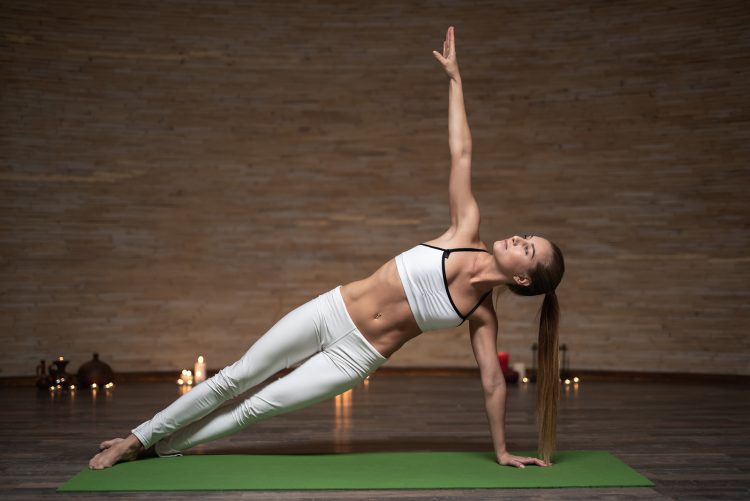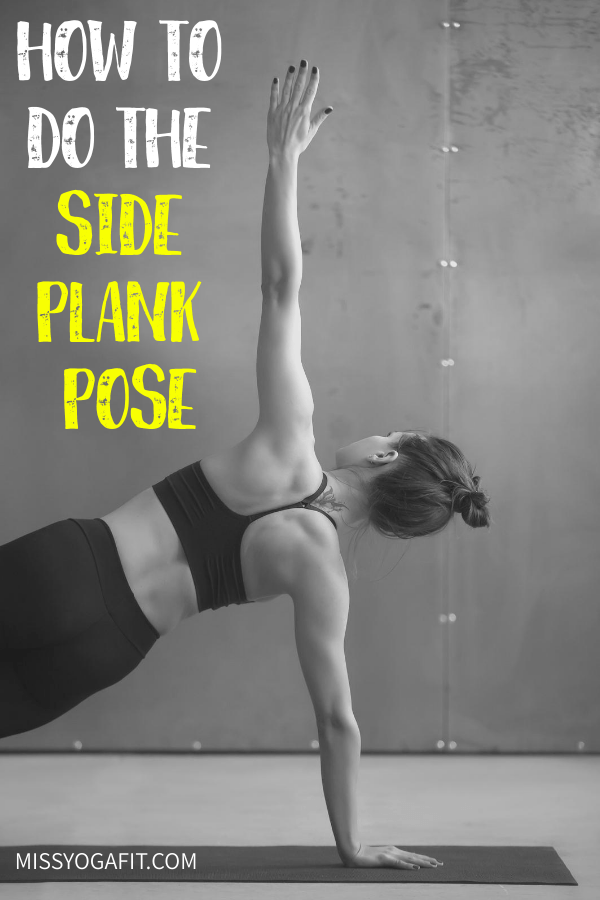
The Side Plank Pose is an advanced arm balance pose; it strengthens the arm and wrist. The pose can be difficult for the majority of beginners if they should start with the style BKS Iyengar explained.
This involves raising the leg perpendicular to the floor. In this post, we will look at an easier and modified version which beginners can perform.
POSE INFORMATION
GENERAL INFO
Name in Sanskrit: Vasisthasana
Difficulty: Hard
POSE BENEFITS
- The pose adds strength to the arms and legs and belly.
- It flexes and makes wrist stronger.
- It increases the sense of balance.
- It flexes and elongates the back of the leg.
POSE CAUTIONS
This pose is not recommended for students who have:
- Wrist injuries.
- Elbow or shoulder injuries.
- Any other severe injury.
PREPARATIVE POSES
- Downward Facing Dog
- Half moon pose
- Plank pose
- Wide-Legged Forward Bend
- Reclining Hand-to-Big-Toe Pose
- Reclining Hero Pose

HOW TO PRACTICE THIS ASANA
ONE
Start with the Downward Facing Dog pose. Now move to the exterior of your left foot and place your right foot over the left.
Move your right hand over your right hip and face your body to the right. Support yourself over your left foot and your right hand.
TWO
The hand that is supporting your weight shouldn’t be under your shoulder.
Move that hand in front of your shoulder to avoid this situation. The arm of the hand will be at a slight angle with the floor.
Extend your arms straight and make the triceps muscles strong. Hold the base of the index finger strongly over the floor.
THREE
Make the scapula and sacrum firm against your trunk. Brace the thighs stronger, and push your heels hard against the floor.
Straighten your whole body along one diagonal line from your heels to the head.
FOUR
You may extend your arm to the ceiling in a straight line and in a parallel line to the shoulders. Maintain the head in a stable position or you can face it towards the hand at the top.
FIVE
Maintain the pose for 15 – 20 seconds. Then return to the Adho Mukha Svanasana. Relax and repeat the whole process to the right for the same duration.
After that, return to the Adho Mukha Svanasana and finally, relax into Balasana.
How to do the Side Plank Pose (Vasisthasana)
BEGINNER TIPS
The main constraint for beginners is to stabilize during the pose. They still fail to achieve this even when the soles are pressed to the wall.
Start with Adho Mukha Svanasana. Determine the distance between your right hand and right foot. Move the foot towards the hand for half of that distance.
Place your right foot on the ground to assist you and face your toes to the right. After that, move to the outside of the left foot and push the sole against the wall.
Now face left as explained earlier. You will get the needed support from the left leg. Return to Adho Mukha Svanasana, and repeat the whole process for the other side.
MODIFICATIONS & PROPS
You can support your soles against a wall to strengthen and stabilize your pose. This means your feet will be on the wall and the balls of your feet on the floor while you do the Adho Mukha Svanasana.
Ensure that you push the soles harder against the wall when it’s time to shift to the outside of your left foot.
In that same way, you should press them against the wall when you want to place the right foot over the left foot.
Finally, during the pose, press your heel hard into the wall.
VARIATION
The complete style of this pose, the one describe by BKS Iyengar, is difficult for beginners. It requires raising the top leg to be perpendicular to the floor.
For beginners, the style described above is the best. Try it with or without supporting he soles against the wall.
Follow the instruction: breathe out, fold the knees, and pull he thigh into your body. Go under the bent leg and with the index and middle finger of the top hand, hold the largest toe.
Support the grip by wrapping the thumb around the two fingers. Breathe out and extend the leg perpendicular to the ceiling.
Stay in his position for 15 – 30 seconds. Free the toe and bring the top foot to its original position. Switch to the other side and repeat the process.
Jennie Malt, a certified Yin Yoga teacher residing in Canada, has been on a remarkable journey of discovery and transformation through the practice of yoga.
Her path, though not one of fame and influence, is a testament to the profound effects of dedication and the capacity of yoga to inspire and uplift.

